Introduction
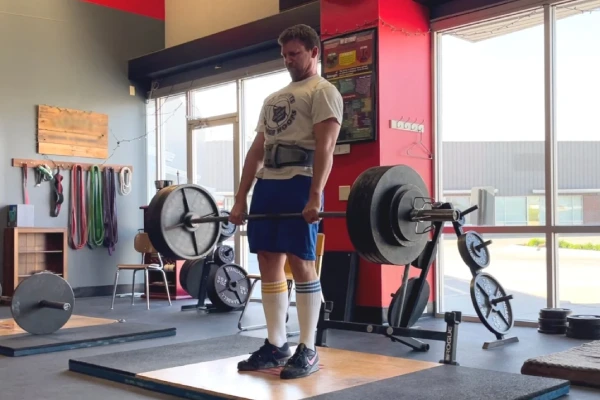
If you’ve ever stepped into a powerlifting gym or watched a competition, you’ve probably noticed something curious: almost every lifter pulling a heavy barbell from the floor is wearing long socks that stretch up to the knee. These aren’t just a fashion statement. Known as deadlift socks, they serve a very specific purpose in the world of strength training.
So, what are deadlift socks exactly? In simple terms, they are knee-high socks designed to protect a lifter’s shins from the rough knurling of a barbell during heavy pulls. While they may look similar to soccer or compression socks, deadlift socks are built with durability, hygiene, and performance in mind. For many athletes, especially those competing, they’re not optional—they’re essential.
In this article, we’ll break down why powerlifters rely on deadlift socks, the benefits they provide, how they differ from regular gym socks, and what you should know before buying your first pair. Whether you’re a beginner learning proper form or a seasoned competitor chasing new PRs, understanding this simple piece of gear can make a big difference in your lifting experience.
What Are Deadlift Socks?
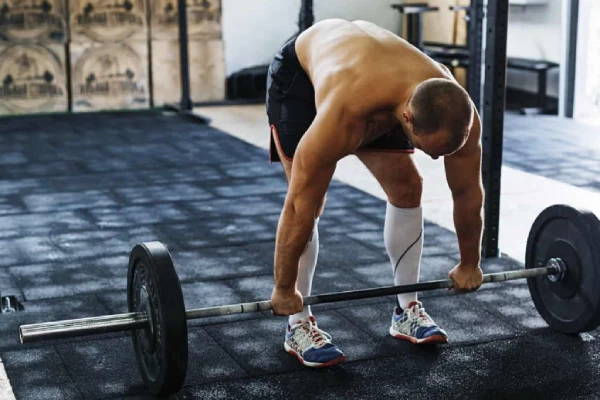
Deadlift socks are specialized, knee-high socks built to withstand the demands of heavy barbell lifting. Unlike regular gym socks, which are usually ankle- or calf-length, deadlift socks are designed to fully cover the shins—the exact area where the barbell drags up during a deadlift.
Key features of deadlift socks include:
- Reinforced shin coverage: thicker material at the front to reduce friction burns and cuts.
- Compression fit: tight enough to stay in place and provide mild support without restricting circulation.
- Moisture management: fabrics like nylon or polyester blends wick sweat, keeping the lifter’s grip stable.
- Durability: engineered to handle repeated bar contact without tearing.
The main difference from ordinary gym socks is function. While your everyday socks may handle light training, they’re not built to protect your skin from the knurling of a barbell—or to meet the strict standards of powerlifting federations. Deadlift socks bridge this gap by offering both protection and compliance.
Why Do Powerlifters Use Deadlift Socks?
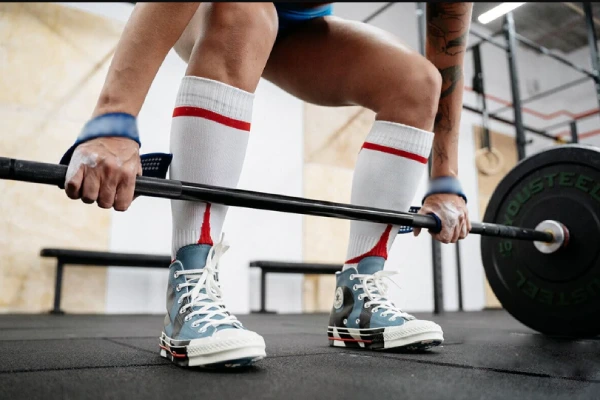
Shin Protection
One of the most obvious reasons powerlifters wear deadlift socks is protection. When you perform a proper deadlift, the barbell should travel close to your body, often grazing or sliding directly against the shins. Without protection, the bar’s knurling (the rough, textured grip) can scrape skin, leaving behind cuts, bruises, or even bleeding.
Deadlift socks act as a shield, providing a barrier between the skin and the barbell. This not only minimizes pain but also prevents potential infections—an important consideration in gyms where equipment is shared by many lifters.
Competition Standards
In competitive powerlifting, deadlift socks are not optional—they’re mandatory. Federations such as the International Powerlifting Federation (IPF) require athletes to wear knee-high socks during the deadlift to prevent blood from contaminating the barbell if an athlete’s shin is scraped. In fact, referees often check sock height before allowing a lifter onto the platform. So if you plan on competing, deadlift socks, powerlifting aren’t just helpful—they’re a requirement.
Performance Benefits
While protection and compliance are the primary reasons, many lifters also report performance advantages. The compression of deadlift socks keeps them from sliding down mid-lift, offering stability and reducing distraction. Moisture-wicking fabrics help keep sweat at bay, which matters when you need maximum focus and grip strength. Even psychologically, knowing your shins are protected allows you to pull with more confidence, without the hesitation that sometimes comes from anticipating pain.
Types of Deadlift Socks and Materials

Like most lifting gear, deadlift socks come in different styles to suit varying needs.
- Basic Training Socks
- Affordable options, usually cotton or cotton-blend.
- Suitable for beginners or recreational lifters who want shin protection without extra cost.
- Competition-Approved Socks
- Certified by federations like the IPF.
- Made from reinforced nylon or polyester for maximum durability.
- Mandatory for competitive lifters.
- Custom or Branded Socks
- Designed with gym logos, team colors, or personalized branding.
- Popular with gyms and retailers for creating identity and community.
Materials Matter
When shopping, pay attention to fabric.
- Cotton: breathable and comfortable, but less durable.
- Nylon/Polyester: highly durable, moisture-wicking, quick-drying—ideal for frequent training.
- Blends: a balance of comfort and strength, best for versatile use.
Look for socks that are knee-high, durable at the shin area, snug without cutting circulation, and approved if you’re competing.
How to Wear and Maintain Deadlift Socks
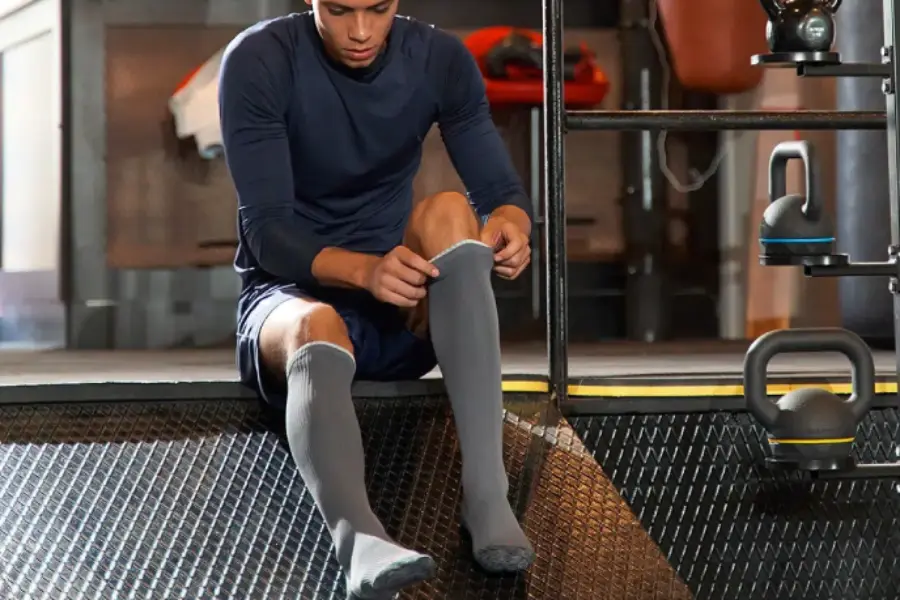
Wearing deadlift socks is simple, but proper use ensures you get the full benefit, ensuring that your deadlift socks remain protective, hygienic, and competition-ready.
- Coverage: pull them up high enough to protect the entire shin path where the bar travels.
- Fit: they should be snug, but not so tight that they restrict circulation.
- Pairing gear: wear them comfortably under knee sleeves or alongside lifting shoes without bunching.
Maintenance Tips
To maximize the life of your socks:
- Wash in cold water after each session.
- Air-dry rather than using high heat, which can break down elasticity.
- Avoid fabric softeners, as they reduce sweat-wicking capabilities.
FAQs About Deadlift Socks
What is the point of deadlift socks?
The main purpose of deadlift socks is shin protection. During deadlifts, the bar travels close to your legs, and without protection, the knurling can scrape your skin, causing bruises or cuts. Deadlift socks also meet competition standards and help keep workouts hygienic by preventing blood from getting on the barbell.
Are deadlift socks required in USAPL?
Yes. In the USAPL (USA Powerlifting) federation, knee-high deadlift socks are required for competition. They must fully cover the shins to comply with rules. This ensures both athlete safety and barbell cleanliness, just like in IPF competitions.
Are deadlift socks the same as compression socks?
Not exactly. While both are tight-fitting and may look similar, deadlift socks are designed specifically to protect against barbell contact and meet powerlifting federation rules. Compression socks, on the other hand, are primarily for circulation and recovery. Some deadlift socks do incorporate compression features, but their main role is shin protection, not medical compression.
Do beginners really need deadlift socks?
Not mandatory, but recommended. Beginners benefit from building good habits early and avoiding shin scrapes that can discourage training.
Can I use soccer or football socks instead?
Yes, for casual training. However, most sports socks aren’t reinforced for barbell knurling and may not be allowed in official competitions.
Conclusion
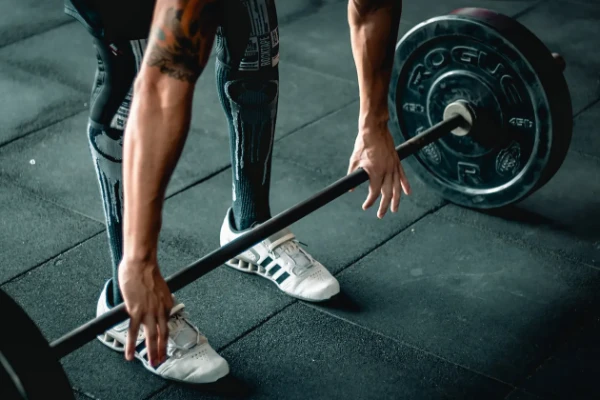
Deadlift socks may look like a minor accessory, but in powerlifting, they play an outsized role. They protect your shins from painful scrapes, comply with strict competition rules, and add comfort to heavy pulls. For beginners, they’re an easy way to avoid unnecessary injuries. For competitors, they’re non-negotiable.
Whether you’re stepping into the gym for your first deadlift session or preparing for your next meet, investing in the right pair of deadlift socks ensures that you train safely, lift confidently, and stay competition-ready.
👉 For gyms, teams, or retailers looking to order deadlift socks in bulk, Max Hosiery offers wholesale and custom solutions designed for performance and branding. Contact us today to discuss your bulk order needs.
